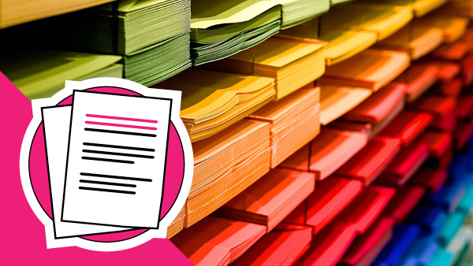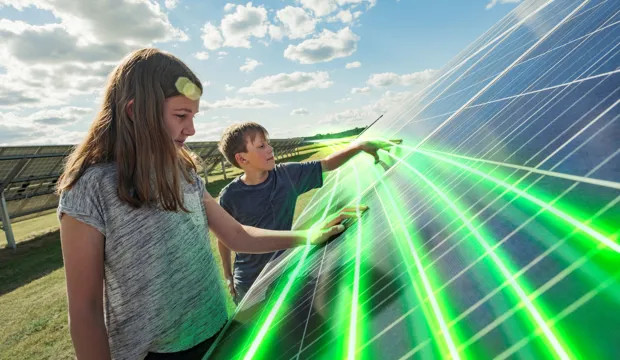
Greenhouse effect experiment
Investigating how carbon dioxide affects temperature
In this activity learners will discover the effects of mixing chemicals and the warming effects of the sun. They will undertake a controlled experiment to investigate how gases in the atmosphere affect the heat in an enclosed environment.
This activity could be used as a main lesson activity, to introduce the concept of the earth’s atmosphere, or as part of a series of lessons investigating environmental issues, the effect of global warming and greenhouse gasses.
This is one of a set of resources designed to allow learners to use practical methods to support the delivery of key topics within Design & Technology, Science, Maths and Humanities. This resource, developed with the support of National Grid ESO, in a practical experiment that investigates how the greenhouse gas carbon dioxide affects the temperature is a closed environment. National Grid ESO ensure that Great Britain has the essential energy it needs by ensuring supply meets demand every second of every day.
Activity: Greenhouse effect experiment
The teacher will first explain what the greenhouse effect is and the role of carbon dioxide, before demonstrating the steps below.
- Label four jars as Air, Vinegar, Bicarb and CO2
- Cut cling film big enough to cover the top of each jar, with a bit extra down the sides ⚠
- Place plastic wrap on the air jar and secure it with an elastic band
- Add 1/4 cup (60ml) of vinegar to the vinegar jar. Cover with cling film and secure with an elastic band
- Add 1 tablespoon of Bicarb to the Bicarb jar. Cover as before
- In the CO2 jar, add 1 tablespoon of bicarb and 1/4 cup of vinegar. Allow the reaction to occur and cover as above
- Measure the temperature of all four jars
- Place the jars on the heat source
Learners will repeat the steps above themselves, record their results and the discuss their findings with the rest of the class, along with the implications of their results.
This activity can be simplified (particularly for less able students) by providing learners with pre-prepared jars and cling film.
Print out the handout for learners to record their results.
As an extension students could plot graphs showing the changes of heating the jars and/or use the internet to investigate what processes produce CO2 and how CO2 levels can be reduced.
This activity is designed to take between 50-60 minutes to complete.
Tools/resources required
- 4 large empty jars
- Cling film
- Scissors
- Masking tape
- Permanent marker
- Bicarbonate of soda
- White vinegar
- Measuring cups and spoons
- Elastic bands
- Thermometers (non-contact infra-red type preferred; if using a traditional contact type one thermometer will be needed for each jar)
- Heat source (radiator with a flat top or a sunny window)
The engineering context
Many human activities result in emissions of greenhouse gases. These can have a significant effect changing the climate and weather conditions that we experience. There is a wide range of possible ways to reduce these emissions. Engineers play a huge role in such areas, developing and implementing processes and materials that produce lower levels of greenhouse gas emissions, such as sustainable methods of power generation. Engineers also have a significant social influence on our behaviours as a society when we consider the future implications of our actions and consumption.
Suggested learning outcomes
By the end of this free resource students will be able to understand that carbon dioxide is a greenhouse gas and be able to make a reaction between 2 materials/chemicals.
Download the free Greenhouse effect experiment activity sheet below!
All activity sheets and supporting resources are free to download, and all the documents are fully editable, so you can tailor them to your students’ and your schools’ needs.
The activity sheet includes teacher notes, guidance, useful web links, and links (where appropriate) to the national curriculum in each of the four devolved UK nations; England, Northern Ireland, Scotland and Wales.
Please share your classroom learning highlights with us @IETeducation.





